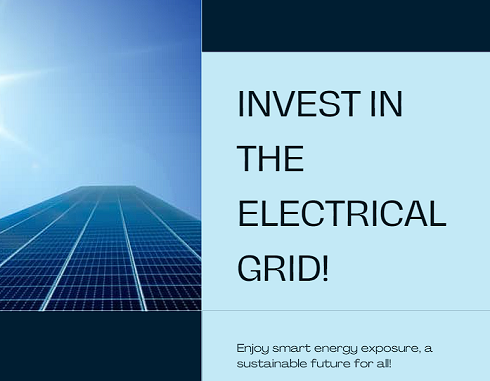
The Evolving Energy Landscape
Traditional energy sources are gradually making way for cleaner and more sustainable alternatives. Renewable energy, such as solar and wind power, is gaining prominence as governments and industries worldwide commit to reducing greenhouse gas emissions. As this transition unfolds, the electrical grid is undergoing a radical transformation to accommodate the decentralized nature of renewable energy sources and enable efficient energy management.
Smart Energy Technologies
Investing in the electrical grid involves embracing smart energy technologies that enhance its efficiency, reliability, and adaptability. Smart grids leverage digital communication and advanced sensors to gather real-time data, allowing for better monitoring and control of energy distribution. With the integration of artificial intelligence and machine learning, smart grids can optimize energy usage, predict demand patterns, and identify potential faults before they escalate into widespread outages.
Grid Resilience and Reliability
Climate change poses a growing threat to the stability of electrical grids. Extreme weather events, such as hurricanes, wildfires, and floods, can disrupt traditional energy infrastructure. Investing in smart grid technologies enhances the resilience of the electrical grid by enabling quick detection and response to disruptions. With decentralized energy resources and automated systems, smart grids are better equipped to withstand and recover from unforeseen challenges, ensuring a more reliable energy supply.
Smart Grid Energy Stocks
Large investors and institutions are taking new positions now in beaten down clean reneweable energy stocks. Review the following companies and others not listed here, that provide products services to the electrical grid to potentially invest in. First Solar FSLR, Enphase ENPH, Eaton Corp ETN, Johnson Controls JCI, Quanta Services PWR, Hubbell HUBB.
Decentralization and Energy Independence
Smart grids facilitate the integration of distributed energy resources, such as rooftop solar panels and energy storage systems. This decentralization reduces dependence on centralized power plants and enhances energy independence at the community level. Investors can benefit from this trend by supporting projects that empower localities to generate, store, and manage their energy efficiently, contributing to a more sustainable and resilient energy infrastructure.
Job Creation and Economic Growth
Investing in the electrical grid not only supports the development of smart energy technologies but also stimulates economic growth and job creation. The transition to a smart grid requires skilled workers in areas such as data analytics, cybersecurity, and system integration. As governments and private enterprises invest in modernizing the electrical infrastructure, opportunities for employment and economic development emerge, making it an attractive proposition for investors seeking long-term returns.
Global Implications
The need for upgraded electrical grids extends beyond individual countries. As the world becomes increasingly interconnected, investing in smart energy solutions contributes to global efforts to address climate change and ensure sustainable energy for all. By supporting advancements in smart grid technologies, investors play a crucial role in shaping the future of energy on a global scale.
In Summary
Investing in the electrical grid for smart energy exposure presents a compelling opportunity for individuals, businesses, and governments alike. As the world transitions to cleaner and more sustainable energy sources, the role of the electrical grid becomes paramount. Smart grid technologies not only enhance efficiency and reliability but also pave the way for a more resilient, decentralized, and economically vibrant energy landscape. Investors who recognize the potential of smart energy solutions in shaping the future of the energy sector are well-positioned to benefit from both financial returns and the satisfaction of contributing to a sustainable and resilient global energy infrastructure.
